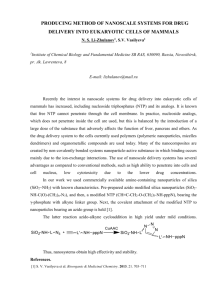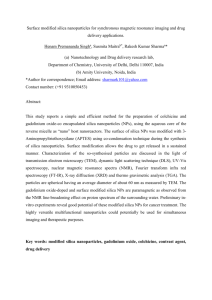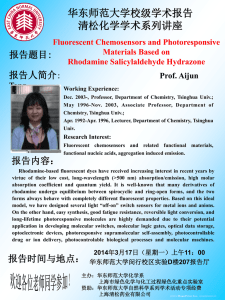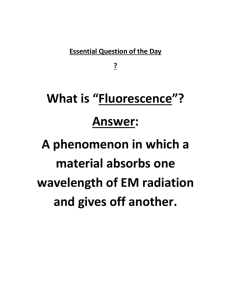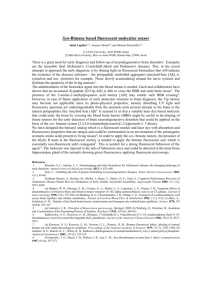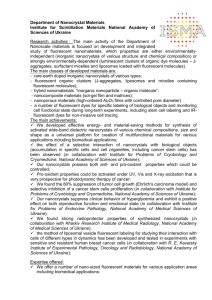PowerPoint Template
advertisement
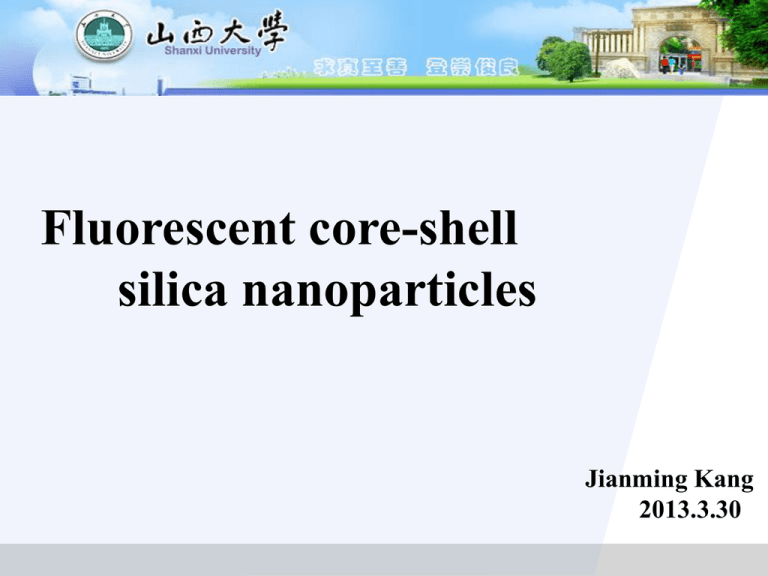
Fluorescent core-shell silica nanoparticles Jianming Kang 2013.3.30 1 Contents 2 Preparation 3 Applications 4 Conclusions Introduction Novel nanoscale fluorescent materials are integral to the progress of emergent fields such as nanobiotechnology and facilitate new research in a variety of contexts. Sol–gel derived silica is an excellent host material for creating fluorescent nanoparticles by the inclusion of covalentlybound organic dyes. Significant enhancements in the brightness and stability of organic dye emission can be achieved for silica-based core–shell nanoparticle architectures at length scales down to tens of nanometers with narrow size distributions. Several nanoscale fluorescent materials Reaction types 1.Substitution reaction Ammonolysis reaction other substitution reaction 2. Addition reaction C=C bond C=N bond 3. Condensation reaction Ammonolysis reaction Other substitution reaction C=C bond addition reaction C=N bond addition reaction Condensation reaction Applications in biology and medicine pH sensing Cell imaging Throughout my presentation, many kinds of reaction types have been introduced that demonstrate the versatility of fluorescent silica nanoparticles. Also, we can add different shells to create probes tailored to explore specific biological questions at near-molecular scale. The versatility provides a wide and open space for innovative research for nanobiotechnology and beyond. Thank you! 感谢各位老师和同学 欢迎大家提出宝贵意见


